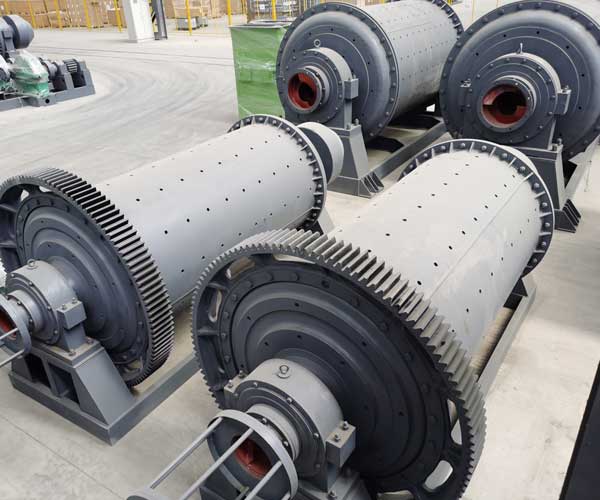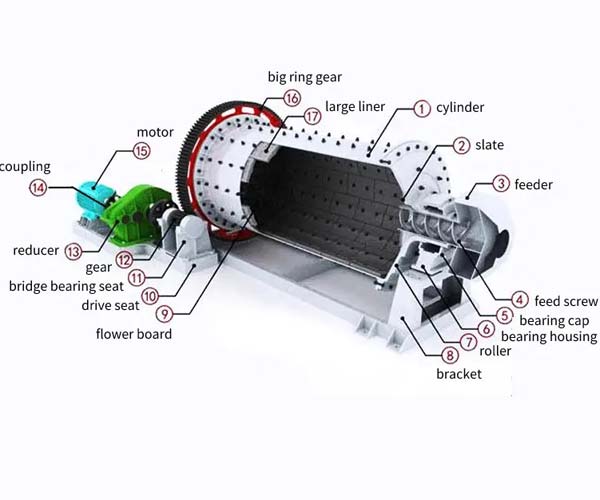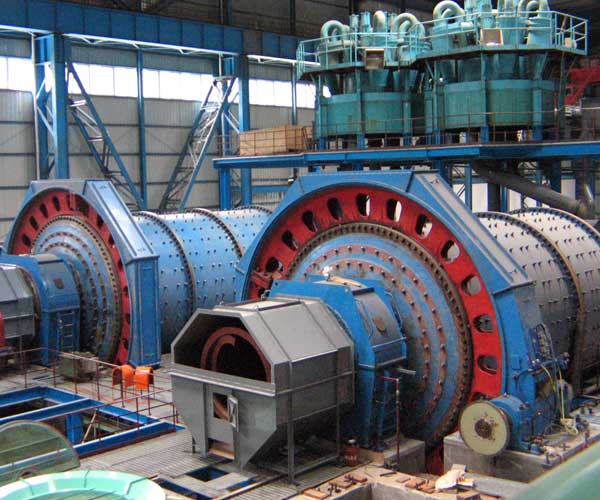
The production process of talc powder is a complex journey that begins with the extraction of raw talc from mineral deposits and culminates in the fine, controlled particle size of the finished product. At the heart of this process lies the ball mill, which plays a pivotal role in controlling particle size, ensuring uniformity, and enabling quality customization to meet the diverse needs of different industries.
24 Online Service

The key to its versatility lies in the meticulous production process that transforms raw talc into a refined powder of controlled particle size.
Talc is a metamorphic mineral that originates from the alteration of magnesium-rich rocks, typically serpentine, pyroxenes, amphiboles, or other minerals. The mineral composition of talc consists of magnesium, silicon, and oxygen, forming a basic structural unit. In its natural state, talc often appears as foliated, fibrous, or granular masses and varies in color from white to shades of green, pink, and grey, depending on impurities present in the deposits.
The talc production process begins with the extraction of raw talc from talc-rich deposits. Talc deposits can be found in various parts of the world, with major sources in the United States, China, and Europe. Once identified and accessed, the talc-bearing rock is extracted through mining operations. These operations involve drilling, blasting, and hauling to remove the raw talc from the earth.
The extracted talc is typically sorted and classified based on its quality and intended application. Sorting is a crucial step, as different grades of talc are required for various industries, such as cosmetics, pharmaceuticals, plastics, and more. Sorting ensures that the right type of talc is used in the subsequent processing steps.
Once sorted, the raw talc undergoes a series of crushing and grinding processes to reduce it to a fine powder. The initial milling stage involves the use of crushers, which break the talc into smaller, more manageable pieces. Subsequently, the crushed talc is further reduced in size through grinding.
The ball mill, an essential piece of equipment in the talc powder production process, plays a central role in the grinding phase. This rotating cylindrical device, typically made of steel or ceramic materials, contains grinding media (such as balls or rods) that are used to crush and grind the talc into the desired particle size. The efficiency of the ball mill in controlling particle size cannot be overstated, as it directly affects the quality and performance of the final talc powder.
The primary purpose of the ball mill in talc processing is to control the particle size of the resulting powder. By adjusting factors such as rotation speed, grinding media size, and the duration of grinding, manufacturers can achieve precise control over the particle size distribution. This is of paramount importance because different industries and applications require specific talc particle sizes. For instance, cosmetics may demand finer talc particles, while industrial applications might require coarser ones. The ball mill’s flexibility in particle size control ensures that the talc powder can be tailored to meet the exact requirements of various end users.
Another critical factor in talc powder production is achieving uniformity and homogeneity in the final product. The ball mill aids in this by ensuring that all the talc particles are subjected to consistent grinding. This process helps eliminate irregularities and ensures a consistent quality of talc powder, essential for maintaining product performance and quality.
Ball mills are highly efficient in terms of energy consumption. They are designed to minimize energy waste and heat generation, making them an environmentally friendly choice for talc processing. Furthermore, they are capable of handling large volumes of raw material, which is essential for high-capacity production processes.
Quality control measures are integral to the talc powder production process. Rigorous testing, including particle size analysis and chemical composition assessments, are conducted to ensure that the talc powder meets the required specifications. By maintaining a consistent and controlled particle size distribution, manufacturers can deliver talc products that perform reliably in their intended applications.

Ball mills are a fundamental tool in many industrial processes, playing a crucial role in particle size reduction and mixing. Whether in the pharmaceutical, mining, or chemical industries, these versatile machines are indispensable for achieving the desired product characteristics.
A ball mill is a cylindrical machine utilized for grinding, mixing, and blending materials. The key components of a typical ball mill include a cylindrical shell, rotating on its axis, often with steel or ceramic balls inside, which serve as the grinding medium. The material to be ground or mixed is introduced into the drum through an opening or a closed vessel. Ball mills come in various sizes and configurations to suit different industrial needs, ranging from small laboratory models to massive machines used in mining and cement production.
To understand how ball mills function, it is essential to grasp their working principle. At the core of a ball mill’s operation is the concept of impact and attrition. When the mill rotates, the balls within it collide with the material to be ground or mixed. This collision creates an impact force, which causes the material to break or disintegrate into smaller particles. Simultaneously, the material is subjected to attrition, as the balls themselves grind against it. This combination of impact and attrition is responsible for the effective reduction of particle size and the homogenization of the mixture.
Understanding the components of a ball mill is vital for comprehending its operation. The primary components of a ball mill include:

Particle size is a fundamental parameter in the world of materials science and engineering. It holds immense significance in various industries, including cosmetics, pharmaceuticals, paint, plastics, and more. One prime example where particle size plays a pivotal role is in the production and application of talc powder. Talc, a naturally occurring mineral, is used in a multitude of products for its unique combination of properties. Particle size greatly influences the texture, opacity, and performance of talc in these applications. To achieve precise control over particle size, industries frequently turn to ball mills.
Talc, a hydrated magnesium silicate mineral, is known for its softness, lubricity, and inertness. These properties make it an indispensable ingredient in many industrial and consumer products. Talc powder is utilized as a filler, extender, and functional ingredient in applications ranging from cosmetics and personal care products to pharmaceuticals and industrial processes.
Particle size is one of the primary factors influencing the texture of talc powder. In cosmetic and personal care products, fine particles of talc contribute to a soft, silky, and smooth texture. Larger particles, on the other hand, can result in a gritty or abrasive feel. Therefore, precise control over particle size is vital to ensure the desired texture in products such as foundations, powders, and creams.
Another essential property affected by particle size is opacity. Finer talc particles offer greater opacity, making it a preferred choice in cosmetics to hide imperfections and provide a matte finish. Coarser particles may reduce opacity and can lead to a more translucent appearance, which might be undesirable in certain applications.
The performance of talc in various applications is greatly influenced by particle size. In pharmaceuticals, talc is used as a lubricant and glidant in tablet manufacturing. Fine talc particles provide a consistent and efficient flow, while larger particles can lead to tablet capping and sticking issues. In the plastics industry, talc is added to improve stiffness, dimensional stability, and impact resistance. The particle size of talc affects these mechanical properties and the overall quality of the final product.
Talc’s wide-ranging applications span multiple industries where particle size is of paramount importance. Here are a few examples:
Ball mills are mechanical devices that use grinding media (usually steel or ceramic balls) to break down materials into smaller particles. In talc powder production, the process typically involves the following steps:
Several factors influence particle size in ball mills:
The use of ball mills for particle size control in talc powder production offers several advantages:
Our Projects
Copyright © ZENITH, All Right Reserved.
